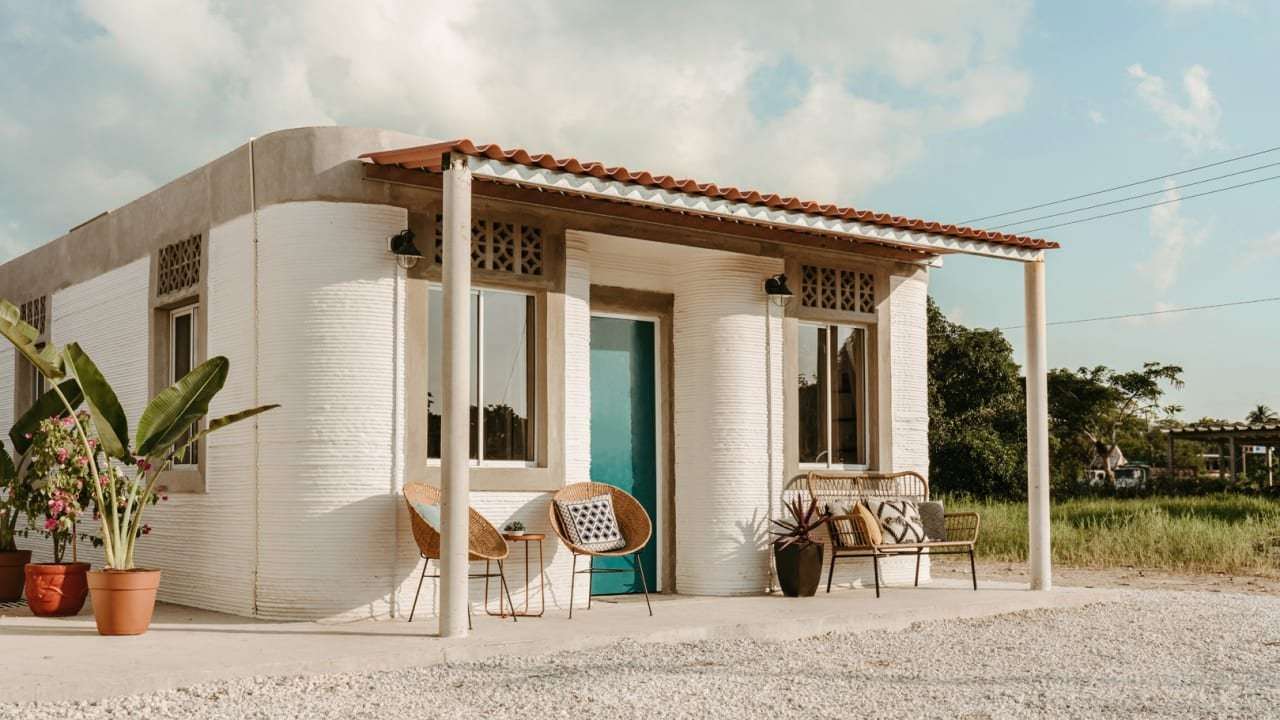The 500-square-foot houses were finished with roofs, windows, and interiors last week. New Story, the nonprofit leading the project, believes that the new construction process could be part of the solution for affordable housing in some of the poorest communities in the world. “We feel like we’ve proved what’s possible by bringing this machine down to a rural area in Mexico, in a seismic zone, and successfully printing these first few houses,” says Brett Hagler, CEO and cofounder of New Story.
The nonprofit, founded five years ago to bring housing to people living in extreme poverty, has already built more than 2,700 homes in Haiti, El Salvador, Bolivia, and Mexico, using traditional construction. In Haiti, where aid groups struggled to rebuild after the 2010 earthquake, New Story honed a process to work more quickly to finish homes. But it recognized that new technology could help it continue to work faster and decrease costs. Two years ago, it partnered with Icon, a construction tech company based in Austin, to begin developing a 3D printer rugged enough to work even in the most challenging conditions.
Icon’s printer, called the Vulcan II, isn’t the first designed to build an entire house. But the new Mexican neighborhood, which will have 50 of the homes, will be the first community to use this type of technology at scale. There have been some other experiments with 3D-printed homes, but they have all occurred in controlled conditions or in areas with little risk of natural disasters, and haven’t yet been proven in the real world.
New Story’s first-of-its-kind project, unsurprisingly, has faced challenges. The team initially planned to build in another part of Mexico, but because of delays in the process of working with the government to get the land, decided to start farther south in Tabasco, a state that borders Guatemala; the new location faces a higher risk of earthquakes, so the design went through even more structural engineering tests. (The nonprofit hasn’t named the specific town to protect the privacy of the people who will live in the neighborhood.)
After the tests were successful, the machine started the long journey south on a truck, but it got stuck at customs for three months. “[The machine] was just a brand new category that obviously didn’t exist,” says Hagler. By the time the machine made it to the village, the rainy season had started. At one point, the entry to the site flooded, so no one could access it for a week.
But the most important test—whether the printer could print a house on the site—went well. The printer works by squirting a concrete mixture in layers to build floors and walls. Software monitors the weather conditions, and the machine can adjust the mixture. “In the morning it might be drier, and then late in the afternoon, maybe it’s more humid, and then you’ll adjust that mixture a little bit in accordance to that that you get the viscosity that you need in order to have the same print quality throughout the day,” says New Story cofounder Alexandria Lafci.

iCowboy on December 11st, 2019 at 16:29 UTC »
Fascinating - it mentions in the article that the houses are capable of withstanding seismic shocks which is a bit of a surprise since unreinforced cement and concrete buildings tend to fail catastrophically during earthquakes.
Any civil engineers around who are able to suggest how they could make a seismically-safe house without using rebar?
prustage on December 11st, 2019 at 15:46 UTC »
Would love to see a speeded up video of this thing in action.
VanguardLLC on December 11st, 2019 at 13:41 UTC »
I’m glad I have lived to see this technology put to good use.